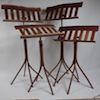Hello all. New to the site and just getting my feet wet with woodworking (as an adult at least--did a few "projects" as a kid but nothing big on my own).
I'm working on acquiring tools over time and have been looking out for a table saw. Was leaning towards starting with a job-site style saw mostly for cost and convenience of storage.
But then I came across a Whitney 177 for sale locally--needs a little work but looked doable. Being pretty new to all this, I'm not the most familiar with all the ins and outs of various types of saws. In my googling I've seen some nice pictures of restored machines and some interesting pictures of machines with the table split either side to side or front to back. I don't totally understand that feature (and it seems like it's maybe not standard on all their saws? it doesn't look like the one I found has that feature in any of the photos I've received)--was wondering if someone could explain that to me.
It seems like the general consensus is that these are high quality saws. Was also wondering if some folks could weigh in on the various features, strengths/weaknesses, or other things to know about the Whitney saw for someone who's never used one.
Any and all advice and wisdom is welcome.
Many thanks!




 Reply With Quote
Reply With Quote




